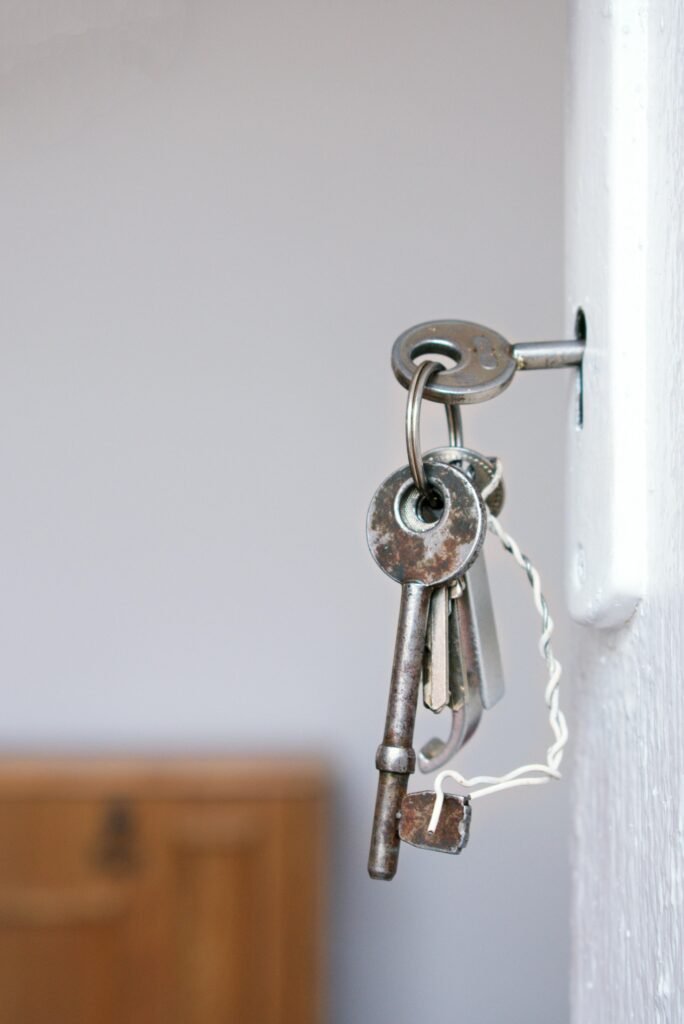Welcome to “The Ultimate Checklist for Inspecting the Condition of Used Gun Safes”! In this article, you will learn the essential steps to take when evaluating a pre-owned gun safe. From checking for signs of wear and tear to testing the locking mechanism, this checklist will ensure that you make a smart and informed decision when purchasing a used gun safe. Keep reading to discover how to protect your firearms and valuables with a quality, second-hand gun safe. Happy inspecting! Are you in the market for a used gun safe but unsure of how to thoroughly inspect its condition before making a purchase? Don’t worry, we’ve got you covered! In this comprehensive guide, we will walk you through the ultimate checklist for inspecting the condition of used gun safes, ensuring that you make a smart and informed decision.

This image is property of images.pexels.com.
Why Should You Inspect a Used Gun Safe?
Before diving into the checklist, it’s essential to understand why inspecting a used gun safe is crucial. By thoroughly examining the condition of a pre-owned safe, you can avoid any potential issues or safety hazards that may arise in the future. Additionally, inspecting a used gun safe allows you to determine its value and ensure that it meets your specific needs and requirements.
Prevents Hidden Damage
Inspecting a used gun safe helps you identify any hidden damage or issues that may not be immediately noticeable. By taking the time to thoroughly evaluate the safe, you can prevent any potential headaches down the road and ensure that you are investing in a quality product.
Ensures Safety and Security
The safety and security of your firearms and valuables should be a top priority. By inspecting a used gun safe, you can rest assured that it will provide the level of protection you need. Inspecting for any signs of wear or damage will help you determine if the safe is secure and tamper-proof.
Exterior Inspection
The first step in inspecting a used gun safe is to evaluate its exterior condition. This includes looking for any signs of wear, damage, or potential security vulnerabilities.
Check for Dents and Scratches
Inspect the exterior of the gun safe for any dents, scratches, or other cosmetic damage. While minor cosmetic imperfections may not affect the functionality of the safe, they can impact its overall appearance and resale value.
Look for Signs of Rust or Corrosion
Check for any signs of rust or corrosion on the exterior of the safe, particularly around the seams and hinges. Rust can weaken the structural integrity of the safe and compromise its security features. Be sure to thoroughly inspect all surfaces for any signs of rust or corrosion.
Evaluate the Paint Finish
Examine the paint finish on the gun safe to ensure that it is intact and free of any chips or peeling. A damaged paint finish can indicate that the safe has been exposed to harsh conditions or improper handling. Ensure that the paint finish is consistent and undamaged.

This image is property of images.pexels.com.
Interior Inspection
After evaluating the exterior condition of the gun safe, it’s time to move on to the interior inspection. The interior of the safe should be in good condition to ensure that your firearms and valuables are adequately protected.
Check for Proper Shelving
Inspect the interior shelves of the gun safe to ensure that they are in good condition and securely attached. The shelves should be able to support the weight of your firearms and valuables without bowing or bending. Make sure that the shelves are adjustable and can accommodate your storage needs.
Test the Locking Mechanism
Check the locking mechanism of the gun safe to ensure that it is operational and secure. Test the combination or key lock to confirm that it functions correctly and engages smoothly. Ensure that the locking mechanism has not been tampered with or damaged.
Look for Fireproofing
If the gun safe is advertised as fireproof, check for any fireproofing materials or features inside the safe. Fireproofing is essential for protecting your firearms and valuables in the event of a fire. Look for fire-rated insulation, seals, or other fire-resistant materials inside the safe.
Mechanical Inspection
In addition to the exterior and interior condition of the gun safe, it’s crucial to perform a mechanical inspection to ensure that all moving parts and components are in good working order.
Test the Door
Test the door of the gun safe to ensure that it opens and closes smoothly and securely. Check that the locking bolts engage correctly when the door is closed and that there are no gaps or misalignments. The door should fit securely against the frame of the safe.
Inspect the Hinges
Inspect the hinges of the gun safe to ensure that they are in good condition and securely attached. The hinges should allow the door to open and close without any resistance or binding. Check for any signs of wear or damage on the hinges that may affect the functionality of the safe.
Check the Bolting Mechanism
Examine the bolting mechanism of the gun safe to ensure that the locking bolts are secure and aligned properly. The bolts should be made of durable materials and engage fully when the safe is locked. Test the bolting mechanism to verify that it functions smoothly and reliably.

This image is property of images.pexels.com.
Electronic Components Inspection
If the gun safe is equipped with electronic components, such as a digital keypad or biometric scanner, it’s essential to inspect these components to ensure that they are in good working order.
Test the Keypad
If the gun safe features a digital keypad, test the keypad to ensure that it functions correctly and accurately registers your input. Enter the combination multiple times to confirm that the keypad is responsive and reliable. Check for any signs of wear or damage on the keypad.
Verify Biometric Scanner
If the gun safe is equipped with a biometric scanner, verify that the scanner is working correctly and recognizes your fingerprint or other biometric data. Test the biometric scanner multiple times to ensure that it provides quick and accurate access to the safe. Clean the scanner if necessary to improve its performance.
Check Battery Life
Inspect the battery compartment of the gun safe to ensure that the batteries are installed correctly and are at full capacity. Check the battery life indicator, if available, to verify that the batteries do not need to be replaced. Ensure that the electronic components have a backup power source in case of battery failure.
Price Consideration
After thoroughly inspecting the condition of the used gun safe, it’s essential to consider the price of the safe. The price should reflect the overall condition, features, and security level of the safe to ensure that you are getting a fair deal.
Compare Market Prices
Research the market prices of similar gun safes to determine if the asking price for the used safe is reasonable. Consider factors such as brand, size, features, and condition when comparing prices. Be aware of any discounts, promotions, or sales that may affect the price of the safe.
Negotiate if Necessary
If you believe that the asking price for the used gun safe is too high based on its condition or features, don’t be afraid to negotiate with the seller. Discuss any concerns or issues you have identified during your inspection and see if the seller is willing to adjust the price accordingly. Be prepared to walk away if the seller is not willing to negotiate.
Factor in Additional Costs
In addition to the price of the gun safe, factor in any additional costs associated with purchasing a used safe, such as delivery, installation, or warranty fees. Consider the total cost of ownership to ensure that the safe fits within your budget and provides value for your money.
Final Thoughts
Inspecting the condition of a used gun safe is a crucial step in ensuring that you are making a smart and informed purchase. By following this ultimate checklist, you can thoroughly evaluate the exterior, interior, mechanical, and electronic components of the safe to determine its overall condition and value. Remember to consider the price of the safe and negotiate if necessary to get the best deal possible. With this guide in hand, you can confidently shop for a used gun safe that meets your needs and provides reliable protection for your firearms and valuables. Happy hunting!
